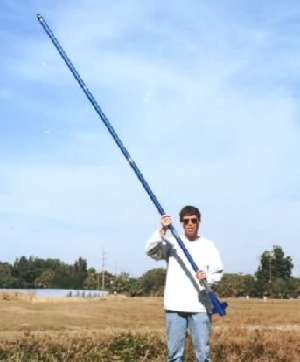watermelonman
Well-Known Member
- Joined
- Sep 22, 2014
- Messages
- 2,597
- Reaction score
- 10
I have a small collection of large, inexpensive, and fun looking rockets I would like to build. The first of note is a nine foot tube used for shipping fancy fishing poles. I am limited to G motors at the field I would like to fly it at.
What are the heaviest rockets people are launching on the venerable G64 white lightning reload and G80 blue thunder singles? I do not care much about altitude but a safe flight is important.
What are the heaviest rockets people are launching on the venerable G64 white lightning reload and G80 blue thunder singles? I do not care much about altitude but a safe flight is important.








